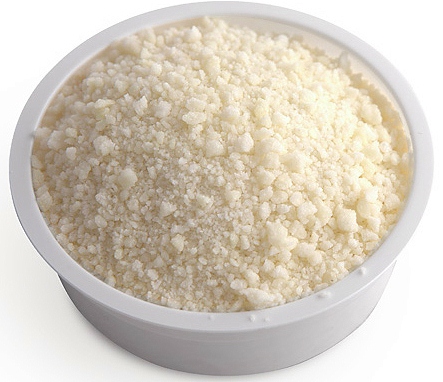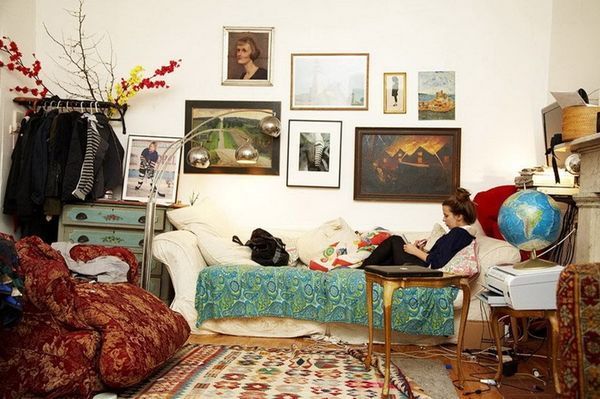Improvised Glue at HomeIn any repairs, whether in your apartment or house, do not do without the glue. Today, the choice of adhesive mixtures in the store is very large. But their quality sometimes leaves much to be desired. Many builders are making themselves the glue at home by expedient means. Note, however, that in each case the composition of the glue may be different because it may be suitable for different materials, such as one − for paper and another − for wood, etc. In this article, we will consider some makeshift glue mixtures that can be easily prepared in simple home conditions, while not spending a lot of money for its buying. Now, let us get started! The flour paste according to the traditional prescription out of flourSuch glue is used in many different situations quite often. Most often, for its preparation is resorted to when absolutely necessary, for example, when the glue from the store comes to a close while updating wallpapers. So, in order not to run to the store for a new pack (which seems to be used lessen by a third), it is easier to make your own mix, which will not a bit worse. Plus this glue is non-toxic and completely safe for use at home conditions. The main ingredient is flour, which certainly there is in every house. A glue ratio is the following – one liter of glue will be enough for two-three rolls of wallpaper.
Prepare the following components: - a container for mixing the glue; To make the glue you need to do the following:
The finished consistency should resemble a thick pudding. You can likewise make such glue with the use of the starch instead of the flour, and it never will be different from the last. In some cases, this glue can show itself even much more effective than glue from the store. If you are afraid to apply such adhesive to the paper, test it on two small pieces of wallpapers, gum them together. Overall, this glue can be used with any wall's surface, to glue the paper with cardboard or other kind of paper. In short, don not be afraid to experiment and see with your own eyes. Homemade PVA-glueThe homemade PVA-glue is the second, equally popular and effective viscous mixture. If you think that the factory makes the adhesive using some special technologies, you are mistaken because the same glue can be done at home. Agree this type of glue is one of the most common. It is used as in the stationery sector so in construction, that is essentially it can be called a universal glue. Well, it is time to move further - on to how still it is to make. This will require:
Conventionally, the procedure can be divided into two stages: - this is a prior preparation, during which the gelatin should be soaked in the glass of water;
• Put the distilled water into some capacity for water-bath. Next, add in there the gelatin, and stir with the flour in a small amount of water (without lumps). As personally to make joiner's glue?This glue is ideal for wood. Also, it is effectively pasted together paper and cardboard, and other materials from cellulose, and in some cases even plastic. However, such glue has a couple of drawbacks:
In part, this problem disappears, if it will be pre-boiled and do a gelatinous mass. Then its application time increases, and, as needed, you can cut a piece of desired size, take the chill off on low heat, and exploit. There are several recipes of this glue. The most basic and available to you, we will describe below.
The first way Take a common carpenter's glue. Chop it and soak in water to full swelling. So, it will soften and become like a jelly. In the same state, place it in a reservoir for melting called glue pot. The easiest way to make such a capacity - it can be made from the ordinary tin can (condensed milk or canned pineapple). Shipped a gelatinous mass in this jar, and place it in a water bath (this must be a very weak fire). Stir the heat mass with a wooden spoon, or a stick (e.g., sushi). You need to stir constantly because in the case of gumming-up, the mass will acquire a yellowish tint, thus losing its adhesive quality. After diffluence the mass diluted with vodka with the following ratio: 33.5 oz of vodka for about 25 oz of glue. Then, for every about 25 oz of glue add 0.4 oz of powdered alum. Received home-made carpenter's glue will have a high degree of adhesiveness and have the excellent waterproofing characteristics. The second way Mix the carpenter's glue and water with the ratio of 1 to 1 in the same glue pot. Once the mixture begins to boil, it will thicken a little, and at this stage it should be poured out in the ceramic mortar and pestle to grind until the formation of a gelatinous mass. After that, put the glue on a plate, cool and cut into appropriate pieces. At need mix this glue by now with vodka in a different ratio – about 25 oz (glue)/ about 13 oz (of vodka). Bring the mixture to a boil, then cool and use. The third way Boil in a water bath a mixture consisting of one liter of water, a kilogram of wood glue, and one liter of 9-percent vinegar. After stirring the mixture, gradually add the liter of vodka. The fourth way Mix the carpenter's glue in water in the ratio of one to one. Heat it in a water bath until then the mixture thickens completely. After, add one part of glycerin (equal to part of glue, which was taken originally). Put on a small fire and wait until the water evaporates completely. It only remains to put it in the mold and dry. Before using, mix it with water in an amount of 1 to 1. Home-made glue for foamRecently, the need for such glue becomes sharper. This is due to the fact that the cases of insulation of walls, sound-proofing, which requires the use of foam and other analogical materials. You can use glue from the store, but as a rule, it is afraid of the solvents, like acetone. Therefore, you can use the carpenter's glue shown above. Otherwise, you can make the glue out of home-made cottage cheese specifically for styrofoam. For this you will need to mix equal proportions of slaked lime with the cottage cheese, stirring to obtain a homogeneous mass. Try to use such glue immediately after mixing, as it quickly hardens. Glue based on casein for wood and leatherCasein glue is very effective for gluing wooden or leather products. This kind of home-made glue is suitable and for other materials, for example for gluing puzzles. But, in order to make this glue, you need to get the casein, so the whole process of glue making should be divided into two stages.
Glue for needleworkMany housewives are engaged in needlework. Quite often they are make tissue flowers, in which special tissue glue is needed in their manufacturing. This glue also can be made by you at home. There are a few simple ways that we now consider: Method №1 For this you will need 3 tablespoons of flour and a glass of water. Dilute flour with a small amount of water. Heat the remaining water and pour a thin stream of this mixture in it. Method №2 Here we need a tablespoon of flour, also a tablespoon of starch, a tablespoon of sugar and a glass of water. Mix all ingredients and bring to a boil, carefully to not forming lumps. Method №3 You need a packet of gelatin, two tablespoons of flour, tablespoon of sugar and a glass of water. Soak the gelatin in 1/3 cup of water for night, and in the morning mix its and other components in the rest of the water. Bring to a boil, and then keep glue in the refrigerator. Glue based on dextrinTo work with paper and various kinds of applications, it is not always possible to use PVA-glue. For example, the ideal glue based on dextrin, which is easily made at home, will be excellent for this case. In order to extract the dextrin, you can use the starch. Take a vessel, pour in the starch and put it into the oven on a small fire. Gradually increase the oven's temperature to 320 °F and maintain it for about half an hour. Thus, the starch will be broken down, and converted into dextrin.
For glue, you will need 3 tablespoons of dextrin, 5 tablespoons of water, and a spoon of glycerin. Mix the dextrin with water, heat the mixture for complete dextrin dissolution and then add the glycerin. Stir, and after cooling you will get ready glue. The glue is acetone based and linoleumTo make home-made glue at home, you can read a lot of recipes, and see that one of the cheapest - is such glue. So, to make it, it is necessary to take up the old linoleum, cut it into small pieces, and put on the bottom of the vessel. Fill it with the acetone in the ratio 1: 2 pieces (1 part of linoleum, 2 parts − acetone). Then, tightly close the container and leave for 12 hours (preferably in a dark place). After this time, the glue will be ready. It can glue metal, porcelain, wood or leather. Universal waterproof gluePretty simple recipe for homemade universal adhesive, resistant to moisture. For this, it is enough to take carpenter's glue, soak it in water for a lot of swelling. After, bring to a gelatinous state, pouring in a container of linseed oil. More articles on the topic: - Secrets of Buying and Laying Ceramic Tiles - Shoe Rack in Apartment: Ideas and Design - 15 Unique Variants Novelties for Bedroom Drapes - Small Balcony − How to Make It Cozy? (+20 Photos) | |
|
| |
Improvised Glue at Home
Design Child's Room for Girls (55 Photos)
What Should Be Design of Bedroom in Modern Style? (55 Photos)
Doors in Interior (55 Photos)
Design Ceiling Plasterboard − Selection of 45 Photos
Bedroom in Zen Style − Harmony and Relaxation
Organza Drapes − Ideas with Pictures (30 Images)
Removal of Goudron, Fuel Oil, Bitumen and Tar
Boho Style in Interior – Design Examples
Bedrooms Design - 39 photos



 So, a day later after the swelling of gelatin, it is possible to start making of PVA:
So, a day later after the swelling of gelatin, it is possible to start making of PVA:










